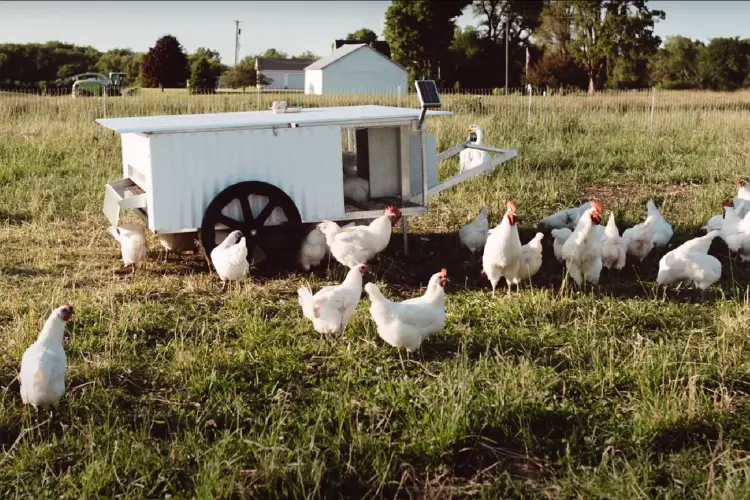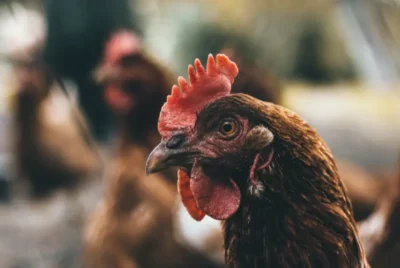Ultimate Guide to Raising American Bresse Chicken
If you’re considering raising chickens for meat and want to produce the highest quality, flavorful poultry possible, then American Bresse chickens should be at the top of your list.
These birds, known for their gourmet meat and exceptional flavor, have gained popularity among poultry enthusiasts and chefs alike. However, raising American Bresse chickens comes with its own set of challenges and requirements.
In this ultimate guide, we’ll walk you through the essential tips and best practices for raising a healthy and thriving flock of American Bresse chickens.
The Origins of American Bresse Chicken
The story of American Bresse chickens begins with their French cousins, the Poulet de Bresse. With a history dating back to 1591, Bresse chickens have long been revered for their delicious meat and are widely considered the finest-tasting chickens in the world.
Additionally, these prized birds hail from eastern France and have been selectively bred for centuries to achieve their unique attributes, such as blue steel legs and white plumage.
In 2011, the first French Bresse chickens were imported to the United States by Greenfire Farms, introducing this exceptional breed to America. Breeding and raising practices were adapted to meet American standards, and the American Bresse chickens we know today quickly gained popularity due to their exceptional meat quality and egg-laying capabilities.

French Tradition and Poulet de Bresse
The French have been breeding Bresse chickens for at least 500 years, with the white Bresse variety being particularly famous since the 19th century. The Poulet de Bresse has a special place in French culture and gastronomy, as farmers’ wives raised the birds in the 17th century.
The Bresse de Bény variety, in particular, gained fame for its intense flavor and exceptional quality, making it a symbol of French gastronomy and a national treasure in France.
In France, the tradition of raising chickens, especially Bresse chickens and Bresse hens, involves adhering to strict standards and regulations to guarantee superior quality and taste. Some of these standards include:
- Using Bresse stock for hatching
- Giving the birds a minimum of 35 days of pasture before they are sent out to forage
- Providing each flock with at least 5,000 square meters of grass for ample space to roam and forage
These practices contribute to the unique flavor of Bresse chickens, also known for their bresse chicks.
Importation and Adaptation
The importation of the first French Bresse chickens to the United States in 2011 by Greenfire Farms presented the challenge of aligning the breed with American standards, all while retaining its exceptional taste and quality.
The American Bresse chickens were selectively bred and raised in a manner that closely resembled their French counterparts, often being compared to the Cornish Cross regarding meat quality.
American Bresse chickens are typically processed between 16 weeks and six months, depending on the requirements of the individual domestic environment. This allows for flexibility in raising the birds while maintaining the unique flavor and quality that have made them highly sought after.
Read also: Why Cornish Cross Chickens Is Best for Meat Production

Characteristics of American Bresse Chickens
American Bresse chickens are a true delight for poultry enthusiasts, boasting a unique combination of characteristics that make them a standout breed. Available in blue, black, grey (silver penciled), and splash varieties, all American Bresse chickens share the distinct feature of blue to steel-gray legs.
As a dual-purpose breed, they are highly esteemed for their flavorful marbled meat and sustainability, making them a sought-after choice in homesteading.
These chickens possess a distinct appearance, including:
- White plumage
- Blue-tinted clean legs
- A single comb
- Delicate and thin white skin
- Medium-sized bodies with a long frame and delicate skeleton
It is believed that their coloration is symbolic of the blue, white, and red of the French flag.
Dual Purpose Breed
One of the most appealing aspects of American Bresse chickens is their dual-purpose nature. These birds are renowned for producing succulent meat and medium to large pale to light-brown eggs.
American Bresse chickens are selectively bred to provide excellent meat production and egg-laying capabilities, ensuring the best of both worlds for poultry enthusiasts.
The superior meat quality of American Bresse chickens is well-documented, with many comparing their taste and texture to that of the Cornish Cross, another popular meat breed.
In addition to their delectable meat, American Bresse chickens also lay high-quality eggs, often beginning to lay earlier than other breeds and producing medium to large, pale to light-brown eggs.
Read also: 10 Essential Tips for Raising Meat Chickens

Selective Breeding and Breed Improvement
Selective breeding plays a vital role in improving chicken breeds and maintaining the unique characteristics that make American Bresse chickens so desirable. Breeders of American Bresse chickens strive to enhance qualities such as:
- Meat quality
- Taste
- Texture
- Laying performance
- Overall health and well-being
Selective breeding in poultry involves choosing parent birds with specific traits and breeding them together to pass them on to the next generation. In the case of American Bresse chickens, this means focusing on traits such as:
- size
- growth rate
- egg production
- meat quality
- disease resistance
Raising Healthy American Bresse Chickens
Feeding and Nutrition
Proper nutrition is critical for American Bresse chickens’ growth, development, and overall health. A nutritionally balanced diet can bolster their immune system, stimulate healthy feather growth, and improve egg production. Additionally, the unique flavor and quality of American Bresse chicken meat can be influenced by their diet.
I recommend feeding American Bresse chickens with the following:
- Wholemeal feed without bone meal or GM cereals until they are five weeks old
- Starter grain or corn soaked in milk for the first four to five weeks
- Transitioned to pasture and finished on corn and dairy as they grow
- A balanced diet, including nutritional supplements such as corn, dairy, and turmeric powder, to maintain their health and productivity.
Housing and Roosting
Providing appropriate housing and roosting spaces for your American Bresse chickens is vital in ensuring their health and well-being.
Adequate shelter and nesting boxes and a designated area for them to roam should be available. The minimum space requirement per American Bresse chicken in a coop is 2 square feet per bird.
For roosting spaces, I recommend providing roosts higher off the ground but not exceeding 1 meter in height. The roosts should be spaced 30-50 cm apart, allowing 14 cm of space per hen.
Providing multiple roosts helps accommodate both dominant and lower-ranking birds, ensuring a harmonious living environment for your chickens.

Flock Management and Disease Prevention
Managing a flock of American Bresse chickens requires attention to detail and a commitment to ensuring their health and well-being. Some recommended practices include:
- Hatching hatching eggs from mature hens that are at least a year old
- Avoiding breeding true siblings to prevent genetic issues
- Replicating the environment and diet that French Bresse chickens enjoy
- Following defined feeding and management practices to maintain the breed’s quality
Preventing common diseases in your American Bresse flock is essential to their health. Here are some tips to help reduce the risk of disease:
- Keep the coop clean and dry
- Provide adequate ventilation
- Routinely disinfect equipment and feeders
- Ensure a balanced diet and clean water
- Avoid overcrowding
- Conduct regular health checks
- Consider vaccinations, if available
Following these practices can help strengthen the chickens’ immune system and prevent diseases.
Summary
As we’ve explored the world of American Bresse chickens, it’s clear that their unique flavor, dual-purpose nature, and fascinating history make them a truly exceptional breed.
Whether you’re an experienced poultry enthusiast or just starting your journey with backyard chickens, American Bresse chickens offer a truly unparalleled taste experience.
So why not embark on your adventure with American Bresse chickens and experience the delicious flavor and satisfaction of raising the world’s best-tasting bird?




